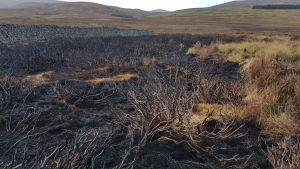Commercial peat extraction occurs mainly on raised bogs to provide peat for gardening. The mechanised peat removal has a major ecological impact, stripping away the living layer and subsequently exposing large quantities of peat to oxidation and loss of carbon. Neighbouring areas of bog within the same hydrological unit can become degraded as a result of the drastically lowered water table. Currently, nearly three million cubic metres of peat are sold for horticultural use every year in the UK, one third of which comes from UK peatlands. The main users are amateur gardeners (66%), followed by industry (34%) and a small percentage by local authorities (<1%) (Defra 2010). Most peat use in the UK can readily be replaced by more sustainable alternatives. The growing media industry has developed high quality products often using composted green wastes which are now widely used.
The IUCN UK Peatland Programme is working with a number of partners, including UK and devolved governments to investigate the restrictions around peat extraction and site restoration, as well as supporting research and policy to support the development of sustainable, peat-free alternatives.
For more information:
- 'Demonstrating Success - Peat-free horticulture addendum 2023' publication
- 'Demonstrating Success - Peat-free horticulture 2021' publication
- Scottish Wildlife Trust: 50 of the future - End peat extraction
- Plantlife: The pain of a peat-free UK
- Melcourt: Moving towards a future of peat-free products











